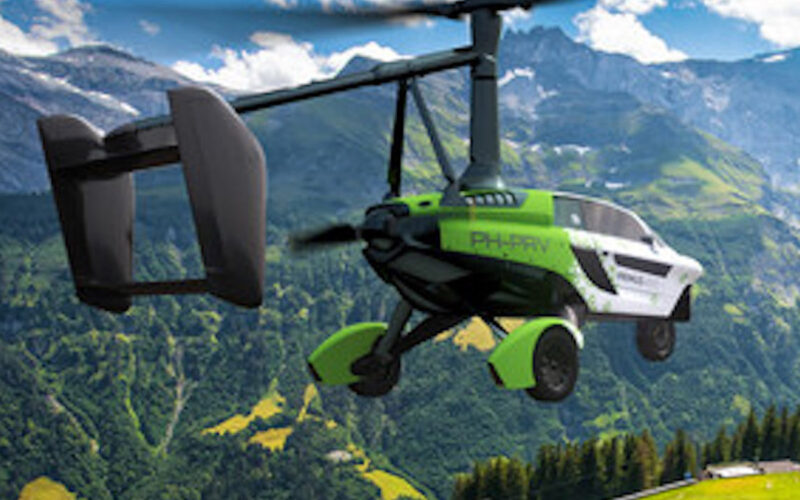Dutch startup PAL-V announced on July 13, 2023, that it had received an order for its PAL-V Liberty aircraft from PRIMUS AERO, a provider of aeronautical services based in Austria.
PRIMUS AERO was looking for a way to prevent its technicians from having to endure long road journeys when servicing customers across Austria’s mountainous territory and found a suitable solution in the PAL-V Liberty.
What sets PAL-V apart in the increasingly competitive advanced air mobility market is its ability to alternate between road driving and flying. Its PAL-V Liberty is, in fact, a “flying car” in the proper sense of the word.
Interestingly, for a company that has kept a relatively low public profile, the PAL-V Liberty has been in the works since 2008 and performed its first test flight in 2012. PAL-V is currently preparing to undergo the final certification stages with the European Aviation Safety Agency (EASA).
AeroTime spoke with Joris Wolters, PAL-V’s director Marketing & Investor Relations, to learn more about this rather unusual flying vehicle and the role it expects to play in the nascent advanced air mobility industry.
The PAL-V Liberty is essentially a car fitted with a gyroplane. Gyroplanes are a technology first pioneered in the 1920s by Spanish engineer Juan de la Cierva. They involve the use of an unpowered rotor that provides lift through its autorotation. The PAL-V Liberty is also powered by a propeller at the back during horizontal flight. The vehicle can quickly be switched between car and rotorcraft mode by the operator depending on the needs of the moment. It has a range of 400 kilometers and can reach speeds of up to 180 km/h when in flight mode.
According to Wolters, this vehicle belongs to a category of its own. “eVTOLs are often called flying cars, but they are not really, since they would still need to use some designated landing and take-off platforms,” he explained, referring to it as the “FlyDrive” category of aircraft.
“Unlike other advanced air mobility concepts, including eVTOLs, PAL-V is a door-to door solution,” Wolters added.
Companies like Terrafugia, which was acquired by Chinese car manufacturer Geely in 2017, and Aeromobil, which went out of business in February 2023, have previously explored this space, but have not materialized in any significant way commercially.
Other startups that have explored the “flying car” are the United States-based companies Alef Aeronautics, which was recently granted Special Airworthiness Certification from the Federal Aviation Administration (FAA) and AKSA. In July 2023, AKSA began its FAA certification process and, just a few days later, was permitted by the US Department of Motor Vehicles (DMV) to become the first vehicle in this category allowed to be driven on public roads.
When it comes to certification of the PAL-V Liberty, Wolters underlined that the vehicle is designed to only use already proven and tested technologies.
“We are making everything so that it is compliant with the existing regulatory framework from the start, rather than expecting to change the latter ex-post,” he said, referring to the eVTOL startup scene.
The PAL-V Liberty is currently undergoing the certification process with EASA within the CS-27 framework for small rotorcraft. Wolters shared that he expected the aircraft to be ready for deliveries toward the end of 2024.
The PAL-V Liberty is currently powered by a traditional gasoline engine, the same used in many conventional cars. However, it could potentially be adapted to other types of fuels or even electric batteries in the future.
The Dutch company is looking at two main markets for its car-aircraft, one of which is urban air mobility, where it may be used by operators providing air (and road) taxi services. The other, which Wolters referred to as the FlyDrive market, is private ownership.
While PAL-V is targeting existing general aviation pilots, it is also looking at those who do not currently have a pilot’s license, particularly small business owners and entrepreneurs who may be tempted by the flexibility offered by this concept and the means to afford it.
The retail price will be in the €350-500k range.
“80% of those that have placed pre-orders are new to aviation,” Wolters proudly explained.
If successful with its certification process, PAL-V, which so far has been entirely funded by private investors and several family offices, is aiming to produce up to 1,200 aircraft annually within a period of five years.

